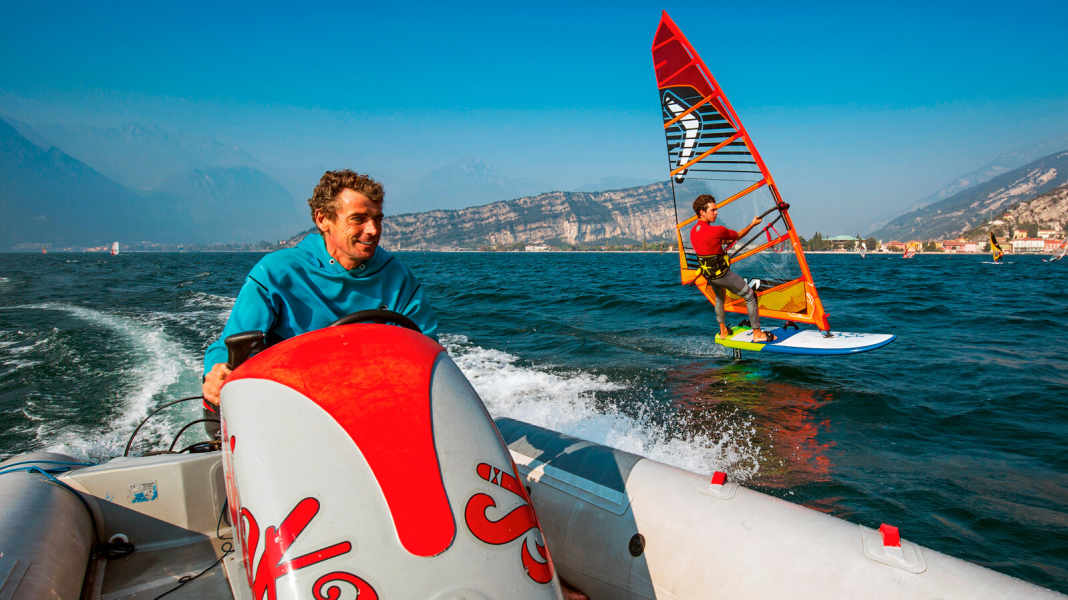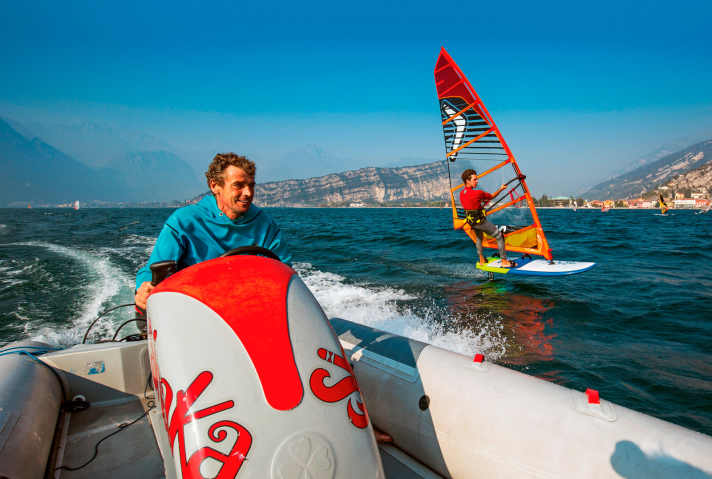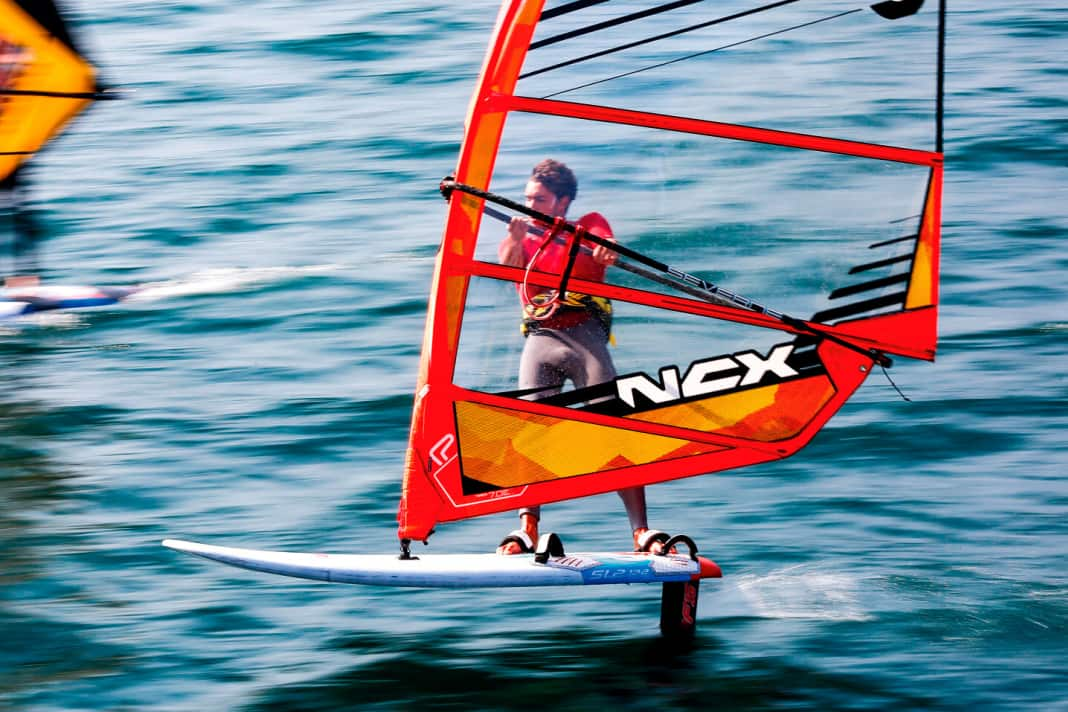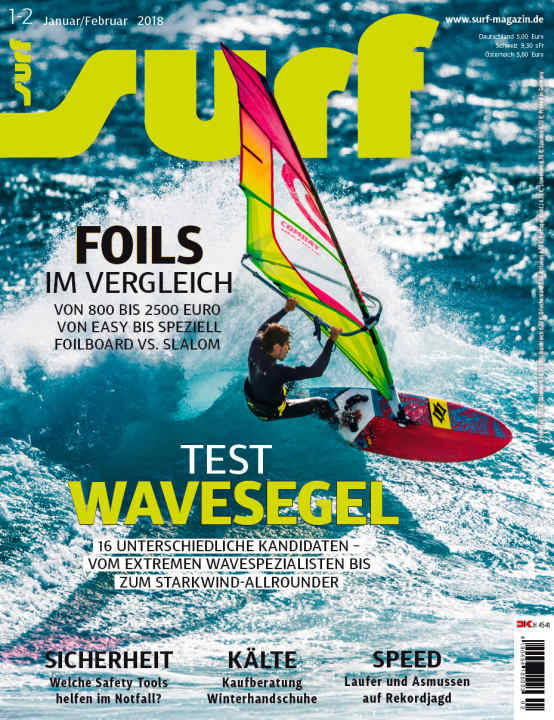Test 2018: Foils and foil boards


Floating, flying, foiling - sailing is currently being turned on its head by the foil trend and for kiters "foiling" in light winds is already completely normal. Will this also happen in windsurfing? There are good reasons in favour - and against. The trend in sailing is certainly due to the fact that the average recreational sailor has so far been travelling very slowly compared to windsurfers. From an old dinghy to a "moth" with a foil, the boat speed is almost multiplied. As a windsurfer, you tend to be slower with a foil. Hobby kiters foil with an appropriate kite in such incredibly little wind, which would not be possible with normal kite material. As a windsurfer, you will hardly be able to push the lowest wind limit much further than with a form board with an 11mm sail - and will need significantly(!) more riding ability, even deeper water and as little weed as possible in the lake.
But: If you dare to try it, if you already have very good freeriding skills (loops on the outside, power jibe really very well), you will probably save yourself the entire largest rig, take 7.5 instead of 9.0 and experience a completely new gliding feeling. There is something special about cruising silently in eight to ten knots of wind with a light 7.5 sail. The upwind characteristics are impressive, learning to foil and then later the foil jibe not only has something literally "sublime" about it, but is the ideal activity for those looking for a new challenge in light winds. However, the pithy, crisp, sometimes hard and jarring feeling that we also love about windsurfing is lost. The choice is yours!
You can find the complete test with these boards in the download area below:
Alternative boards:






AN LAND
Boards: When it comes to board concepts, philosophies differ at least as much as with foils. AHD and RRD rely on the unchanged high-performance slalom board - which worked very well in the test. Starboard has the Foil 147 in its programme for 2018, which is almost identical to the normal early planing windsurf board. For light winds, this forms an excellent, extremely stable combination with the Starboard "Race" foil, even with larger sails of seven to nine square metres. The only thing that is lost on the large board is the sporty feeling. With the Hover 122 WS, Naish has opted for a pure windsurfing foil board that fits the concept for foiling with rather small sails of up to 6.5 square metres and the correspondingly particularly buoyant wing from Naish. Fanatic is sending the "Falcon LW" into the race, a light wind slalom board that was developed more for sporty early planing and less for regattas and is also not available in the lightest construction. JP-Australia and Slingshot have uncompromising, performance-oriented foil boards in their range: short and wide - and specialised for foiling, which worked excellently in the test.
Foils: The carbon wings in particular are "captivating" with some very sharp-edged details. The tips of the wings and the tear-off edges on the masts and wings are sometimes delicate and easily damaged, and are also prone to injury.
Handling and care: As high-end equipment, foils actually require a little more care during transport and also - especially after use in salt water - some maintenance. The carbon foils in particular do not like stone contact on the wings, and the very thin edges should be handled with care. A GRP wing can take a lot more punishment. With this and the other foils with aluminium masts and fuselages, there is an increased risk of corrosion of the aluminium at all contact points between aluminium and stainless steel (screws in the thread); the screw connections may then be extremely difficult to undo due to the white oxidation powder that forms.
Special features: The slingshot fuselage, which is flattened on two sides in the profile, has plenty of holes that make it possible to change the position of the mast by rotating the fuselage 180 degrees (front to back). Depending on your choice, the front wing moves closer to the mast for more control or further forwards for more lift. We actually noticed a difference in the test. In the "power position", with the wing far forward, the foil lifts particularly early, with the front wing moved backwards the board rises less and in light winds - in the Fanatic Falcon LW - the board foils at a lower height over the water.
Mounting systems: Most manufacturers use the deep-tuttle box commonly found in large slalom and formboarders. The advantage is compatibility with each other and from 2018 at the latest, many manufacturers will be equipping the large slalom boards with this box in a specially reinforced version for foil use.
Stiffness: A high level of stiffness ensures a smooth ride, especially the torsional stiffness of the mast and the two wings in relation to each other seems important. Lateral bending of the mast, on the other hand, has less of an effect on the handling characteristics. The aluminium masts in particular impress with maximum torsional rigidity.
On the water
Planing and performance: During the tests, we measured the speed at which you "hit the foil". Surprisingly, even normal planing shortly before take-off is at a significantly lower speed than usual. With large freeriders, a good 20 km/h is usually needed to generate the dynamic lift required for gliding. Supported by the foil, all boards glide at significantly lower speeds. The take-off on the foil then takes place between 15 and 19 km/h at the latest. For the best flight stability and maximum performance, a foil board should ideally not be too narrow (around 75 centimetres wide with the widest possible tail seems to be a solid minimum), as light as possible and not too long. In particular, the freeride boards tested with a longer nose section are more likely to make a stopover than the short foil specialists - or at least the lighter and slightly shorter slalom shapes.


